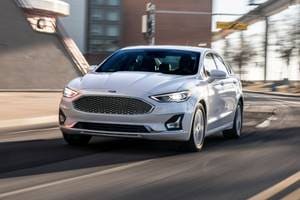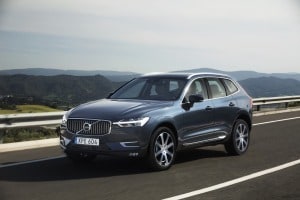Upcoming Revenge of the Electric Car?
Just one year ago, the North American International Auto Show in Detroit buzzed with automaker plans for electrified vehicles, including hybrids, electrics (EVs) and plug-in hybrid electrics (PHEVs). With two well-received mass market EV/PHEV newcomers — the Chevy Volt and the Nissan Leaf — ramping up production, the industry seemed poised to take a significant step toward a non-gasoline-powered fleet. The Chevy Volt won the North American Car of the Year award, the Motor Trend Car of the Year award and the Automobile Automobile of the Year award. Automobile even named electric vehicles "technology of the year." One year later both the Volt and the Leaf had failed to sell as expected. Even worse, after gaining momentum this past fall, 2012 opened with a sharp drop in EV/PHEV sales. While some industry observers worry that low sales mean demand for these vehicles is more limited than initially expected, the culprit could be supply. Limited availability of both vehicles raises the potential of unmet demand, and with just two mass market options, some would-be EV/PHEV purchasers have been deterred by the lack of choices in the segment.
This year will test the theory of whether supply or demand is holding back the electrified car with several new entrants throwing their hats in the ring. Mitsubishi has introduced the i-MiEV, while numerous other EVs have been announced: the BMW i3, the Ford Focus BEV, the Honda Fit EV and the Honda Accord EV. A plug-in version of the America's most popular hybrid, the Toyota Prius, will be available this spring, and the Ford Fusion Energie PHEV will follow later in the year. The new entrants will mean a greater and more diverse supply of vehicles that could fulfill at least some unmet demand and result in expanded sales. And, if consumers value the differences between models, they will be more willing to pay premium prices for a given model.
If you build it, they will come
Constraints on Leaf and Volt availability in 2011 support the theory that sluggish sales growth in the EV/PHEV segment stemmed from an issue with supply. Pre-orders made in 2010 claimed the Leafs produced in 2011, leaving only unclaimed pre-orders for consumers who decided to purchase a Leaf during the year. Leaf availability was further limited by Nissan's decision to initially offer Leafs in only select states — still just 30 states by the end of 2011. While Chevrolet did not offer a pre-order program for the Volt, its availability was limited by the roll-out of the Volt in regional "waves," with nationwide availability beginning only in early Fall 2011. Volt sales increased as the roll-out progressed. Volt sales also rose when General Motors released in October 2011 some 2,300 Volts that dealers had been required to keep on display. Both companies have announced higher production for 2012, opening the door for potential growth in EV/PHEV sales if unmet demand does exist.

One size does not fit all
EV/PHEV sales also could expand if new models attract consumers who find these models more appealing, more useful or simply more affordable than the existing models. Cars and trucks are fairly diverse products. Each model varies not only in price, but also in many other ways from each competing model, with different features, options and uses. Automaker, brand and dealer reputations also help differentiate models.
Some of the new competitors to the Volt and the Leaf differ from these vehicles in ways that could appeal to a different set of consumers. For starters, the new vehicles mark the addition of several new brands to the segment. While the Volt and the Leaf are compact cars, some new entrants, including the Accord and the Fusion, are midsized offerings seating five. PHEVs generally have a greater range than the Leaf, and, unlike the 2011 Volt, the 2012 Volt as well as the Toyota Prius Plug-in will qualify for coveted carpool lane privileges in California — the state where the most electrified vehicles are typically sold. At least two new 2012 models, the i-MiEV and the Prius Plug-in, are priced lower than the Volt and the Leaf, with the i-MiEV's starting MSRP at $29,125 and the Prius Plug-in's at $32,000; the Volt comes in at $39,145 while the Leaf is priced at $35,200.
Consumer shopping patterns show that the differences between vehicles do in fact matter. For example, less than 30 percent of Edmunds.com users who shopped for an i-MiEV also shopped for a Leaf and less than 15 percent of i-MiEV shoppers also shopped for a Volt. Even the Volt and the Leaf, despite being the only mass market offerings in the category during most of the past year, were only cross-shopped on average by about one-third of consumers shopping for either of these vehicles.

Price-increasing competition
Due to product differences, new entrants could have a surprising effect on prices. Typically, more competition drives prices down. If low supply is the main reason the EV/PHEV segment has not experienced substantial growth to date, growing supply eventually will catch up to demand, resulting in lower prices than we see now.
But, if limited market growth is caused primarily by existing models failing to meet the needs of certain consumers, then the introduction of new vehicles could have little to no effect on prices and could even result in higher prices. To see this, consider how competition works. If products are not significantly different, then sellers compete primarily on price to win buyers because buyers see the products as close substitutes and are willing to switch to the one with the best price. In this case, new entrants fight to gain buyers by offering lower prices and existing sellers must lower their prices to keep their customers.
In contrast, if products do differ enough that consumers do not consider them to be close substitutes, then sellers compete more on product characteristics than on price and can charge higher prices because consumers are loyal. In this case, new entrants do not necessarily need to charge lower prices to gain customers because some buyers will prefer the new products over the existing ones. Even if the new entrants must offer lower prices to attract buyers — for example, if buyers hesitate to try an unproven product — existing sellers can maintain the customers who most value their products without lowering prices, since these loyal customers value the products enough to pay more. In fact, economists have documented price increases following entry in several industries with differentiated products, including brand-name drugs, fast food, and airline ticket prices.
How large a pie?
The case for limited supply and selection holding back the EV/PHEV segment is compelling. Certainly, the models debuting in the segment this year will help resolve availability and choice issues for some consumers and result in sales growth. But, other issues constraining sales will remain, including the key demand-side problems of higher prices relative to traditional gasoline-powered vehicles, unfamiliar technology and an adequate infrastructure for EV charging. Even if the sales pie should be larger than it is today, the question remains as to how much it can grow from expanded supply alone — and whether demand issues will limit the size of the pie sooner or later. Check back later this week for a look at the role of demand in shaping EV/PHEV sales.
Lacey Plache is the Chief Economist for Edmunds.com. Follow @AutoEconomist on Twitter.





